Learn about the threatened Dakota Skipper butterfly in this NDO Webcast.

Wildlife Notes
Sandhill Crane Migration
North Dakota plays a significant role during Sandhill crane migration each spring and fall. Learn more in this NDO News.
North Dakota's State Fish - Northern Pike
Northern pike are North Dakota's state fish. Learn about the biology and behavior of this unique species in this NDO webcast with fisheries biologist Paul Bailey.
Wild Turkeys in North Dakota
Did you know that turkeys are not native to North Dakota? They were originally stocked in the 1930s and 40s. Learn more in this week's NDO Webcast with upland game biologist RJ Gross.
Aquatic Invertebrates Survey
The North Dakota Game and Fish Department manages our state's fish and wildlife, including those species like aquatic invertebrates that often go unnoticed. Learn more in this week’s NDO News.
Crayfish in North Dakota
Did you know that North Dakota has 2 species of crayfish? Learn more in this week’s NDO News with fisheries biologist Mike Johnson.
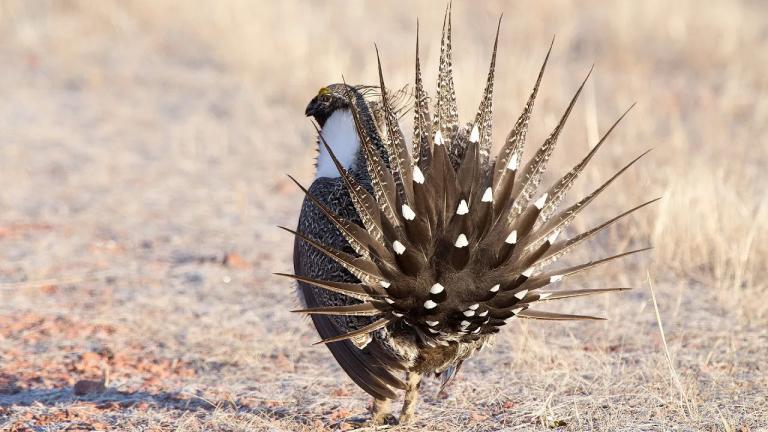
Disappearing Sage Grouse
Sage grouse are disappearing from North Dakota. Learn more in this NDO webcast (2024).
Read Full Article: Watch Disappearing Sage Grouse
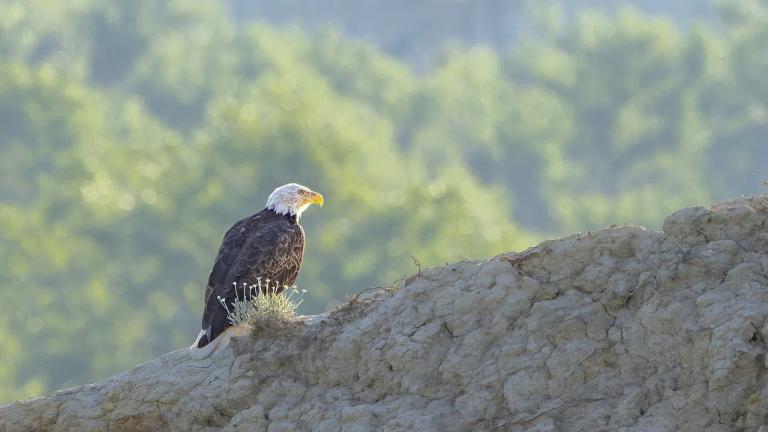
Bald Eagle Populations in North Dakota (2024)
Once an endangered species, bald eagle populations are increasing in North Dakota. Learn more in this NDO news video (2024)
Read Full Article: Watch Bald Eagle Populations in North Dakota (2024)
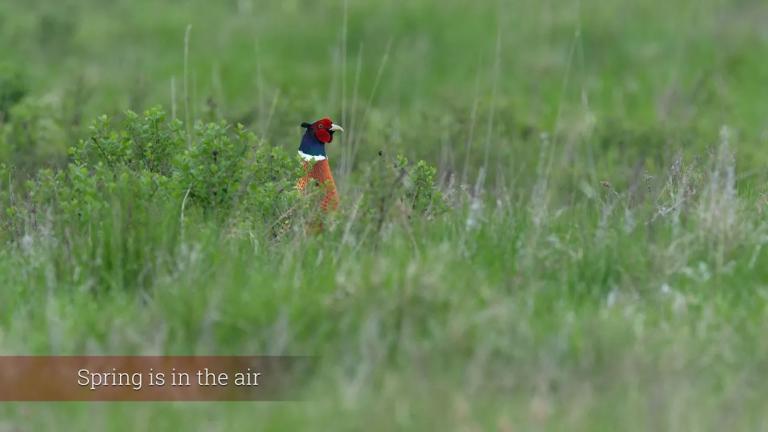
Ring-necked Pheasant Behavior
During breeding season, male ring-necked pheasants will defend a territory against other males. Conflicts sometimes get a little heated...
Read Full Article: Watch pheasant tussle

Hudsonian godwits
Unlike marbled godwits, which breed in North Dakota, Hudsonian godwits can only be seen in the state during their spring migration.
Read Full Article: Watch Hudsonian godwits
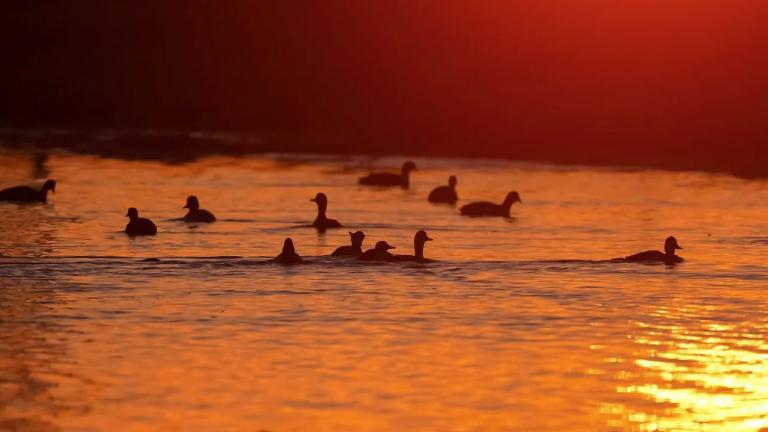
Wetlands
Breeding waterfowl depend on the prairie pothole region. Find out why.
Read Full Article: Watch Why are Wetlands Important

Long-Billed Curlews
Long-billed curlews are one of the 13 shorebird species known to nest in North Dakota. Learn more about these neat little birds here.
Read Full Article: Long-Billed Curlews
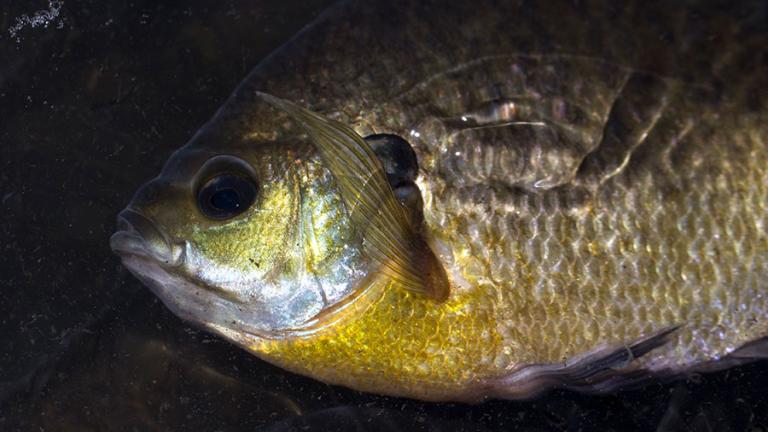
Bluegill Spawn
Bluegill spawn late May and June when water temperatures near 22 C (71.6F). Large males build nests in colonies where they spawn and protect eggs. Some smaller males will mimic females to fertilize eggs instead of nest building and defense.
Read Full Article: Bluegill Spawn
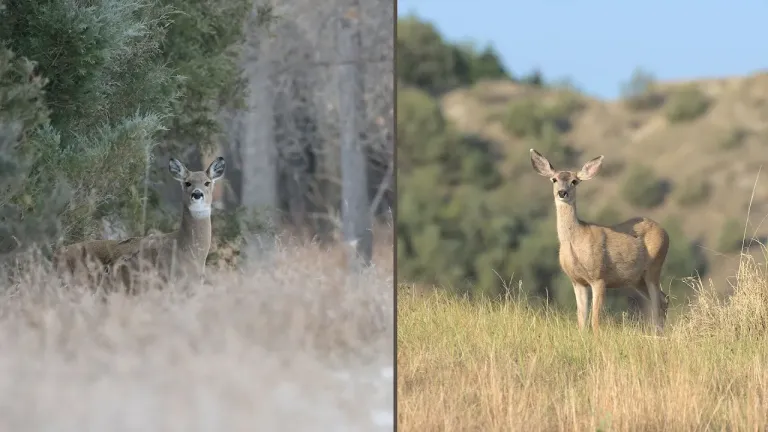
North Dakota Deer Species
North Dakota is home to two deer species, whitetail and mule deer. Learn more about their similarities and differences in this video.
Read Full Article: Watch North Dakota Deer Species
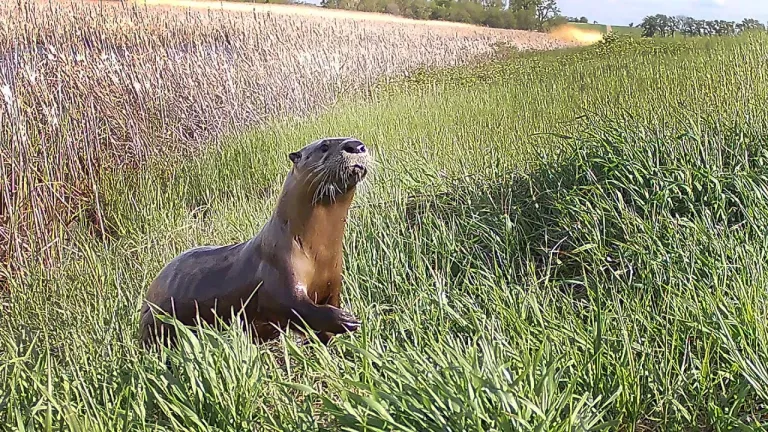
River Otters in North Dakota
River otters can be found in certain river corridors in North Dakota. Learn more about this species in this short video.
Read Full Article: Watch River Otters
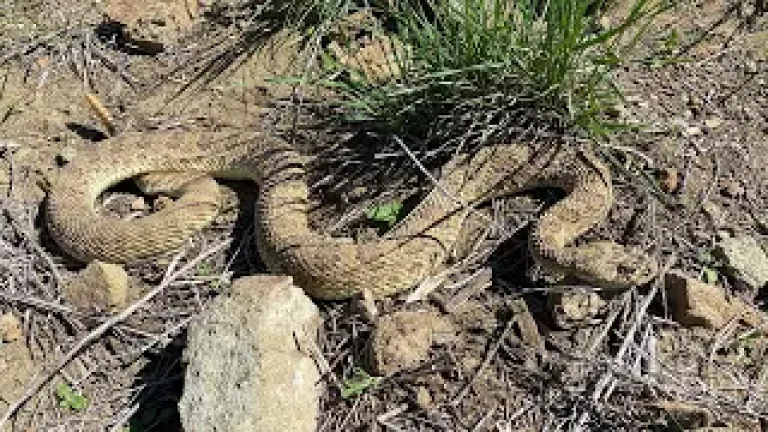
Prairie Rattlesnakes
Contrary to popular rumor, there are prairie rattlesnakes east of the Missouri River in North Dakota. Learn about one population in this video.
Read Full Article: Rattlesnakes in North Dakota
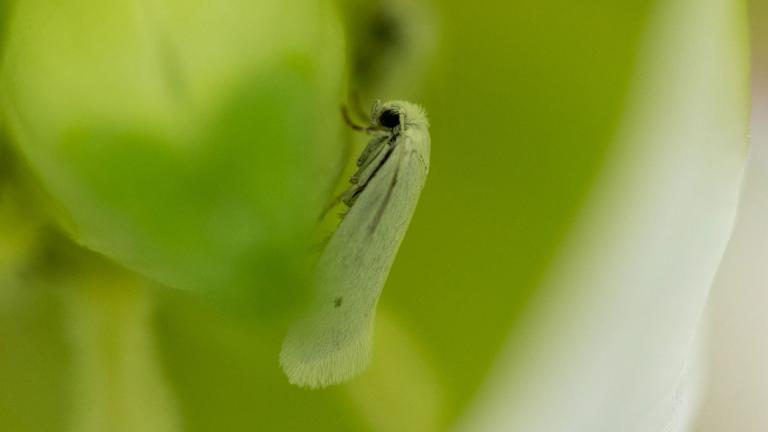
Yucca Moths
Did you know that yucca moths are the yucca plant's only pollinator? Learn more here!
Read Full Article: Yucca Moths
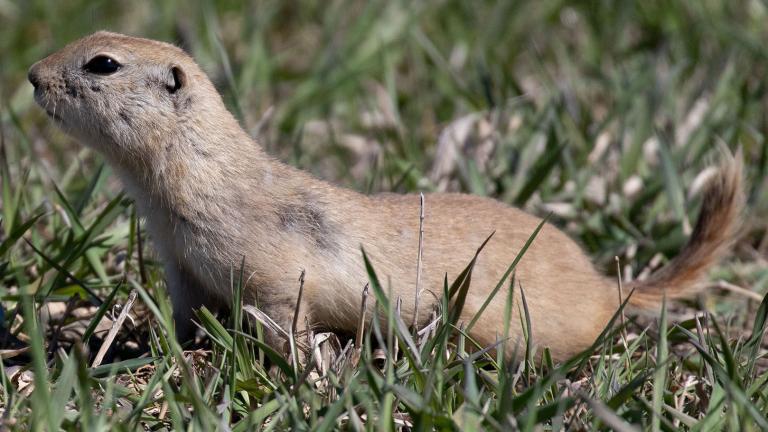
North Dakota Ground Squirrels
So is that ground squirrel you see in the North Dakota countryside a Flickertail or a Franklin's?
Read Full Article: North Dakota Ground Squirrels
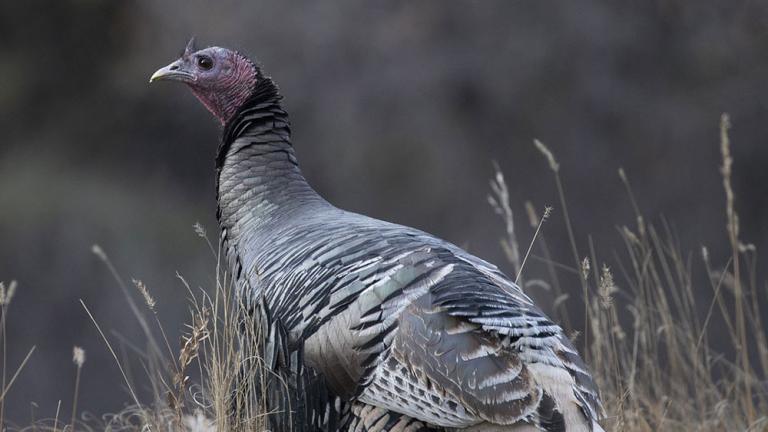
Wild Turkey in North Dakota
Wild turkey, a popular upland game species in North Dakota, are not native to the state. Learn more in this Wildlife Notes post.
Read Full Article: Wild Turkey in North Dakota
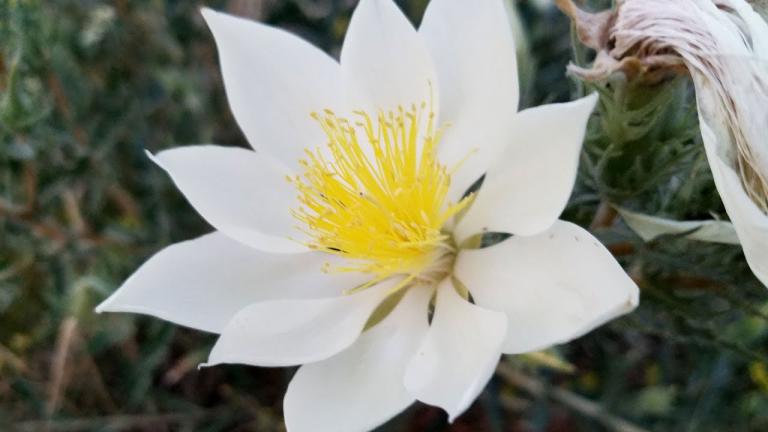
Ten-Petal Blazing Star
If you want to see one of the state’s most impressive wildflowers in full bloom, you need to know not only where to look, but when.
Read Full Article: Ten-Petal Blazing Star
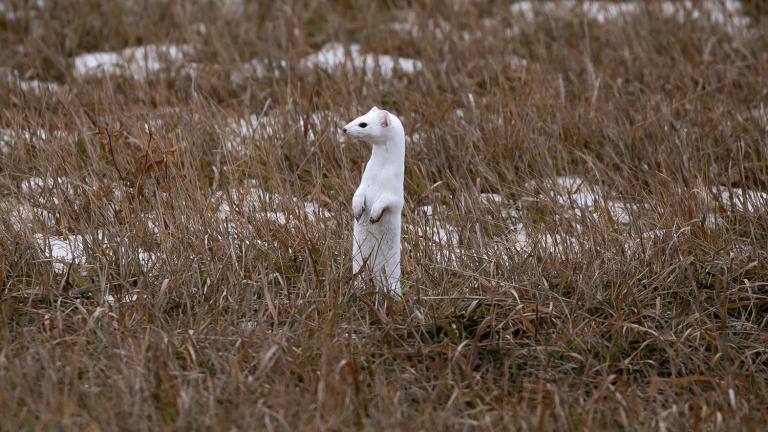
Winter Camouflage
Did you know that North Dakota's two hare (white-tailed jackrabbits and snowshoe hares) and three weasel (long-tailed, short-tailed and least) species turn white in the winter.
Read Full Article: Winter Camouflage

Winter Ticks and Moose
Stories about ghost moose are being told with increased frequency across the southern portion of moose range in North America. Winter ticks are the cause.
Read Full Article: Winter Ticks and Moose

Newly Hatched Killdeer Chicks
Newly hatched killdeer chicks, while not the most graceful of creatures, are arguably one of the most adorable. These chicks were filmed in a gravel area right outside of one of the Department's offices.
Read Full Article: Newly Hatched Killdeer Chicks

Bison in North Dakota
Watch this short video for some facts on bison in North Dakota.
Read Full Article: Bison in North Dakota

Eastern Kingbird and Chitin Pellets
Eastern kingbirds (Tyrannus tyrannus), which can be found across North Dakota in the summer, feed primarily on insects during the breeding season. Like owls and some other birds, eastern kingbirds regurgitate pellets of indigestible prey parts, in this case insect chitin. Here is a series of photographs demonstrating this behavior (because we knew everyone would appreciate this visual to start your day out right!)
Read Full Article: Eastern Kingbird and Chitin Pellets
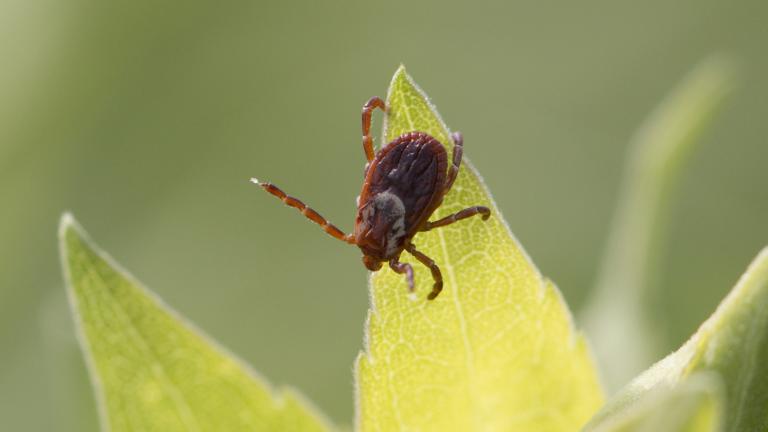
Ticks
Ticks sit on the tips of vegetation with legs outstretched waiting for dinner to wander by. Learn more about one of North Dakota's least favorite insects here.
Read Full Article: Ticks
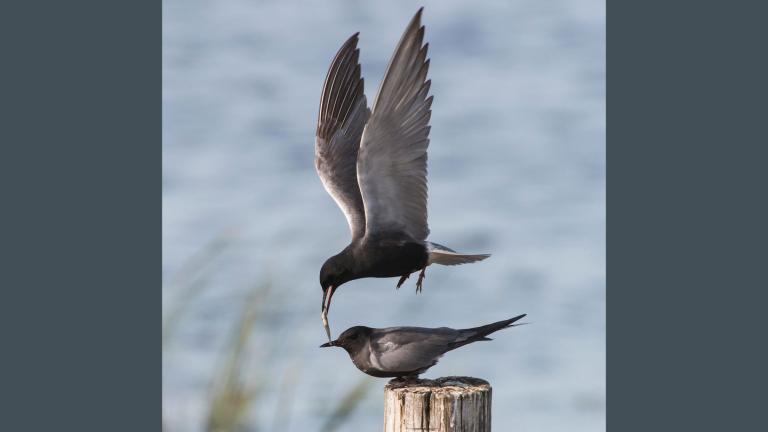
Black Tern Fish Flight
Read Full Article: Black Tern Fish Flight

American Coots in North Dakota
American coots are a fairly common water bird in North Dakota. Check out this short video to learn more.
Read Full Article: American Coots in North Dakota
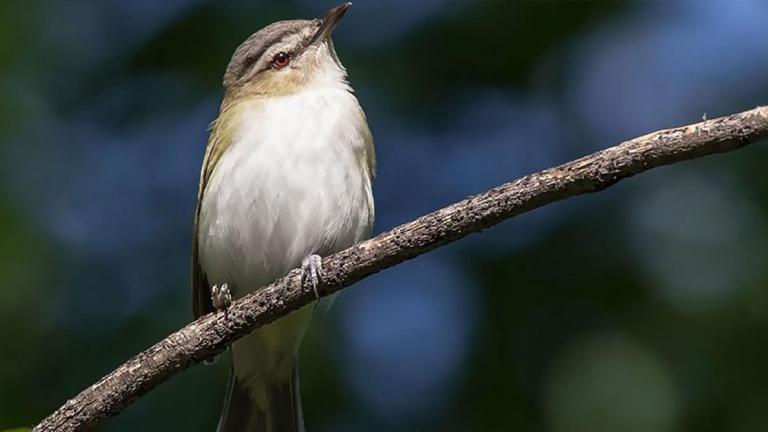
Red-Eyed Vireo
Red-eyed vireos typically sing high in tree canopies in short little bursts of 2-4 syllables, altering back and forth between ascending and descending tones so it sounds like a 90's Valley Girl on the phone saying, "Hello?" "Where are you?" "That's cool" "I'm up here." "Totally."
Read Full Article: Learn more about red-eyed vireo
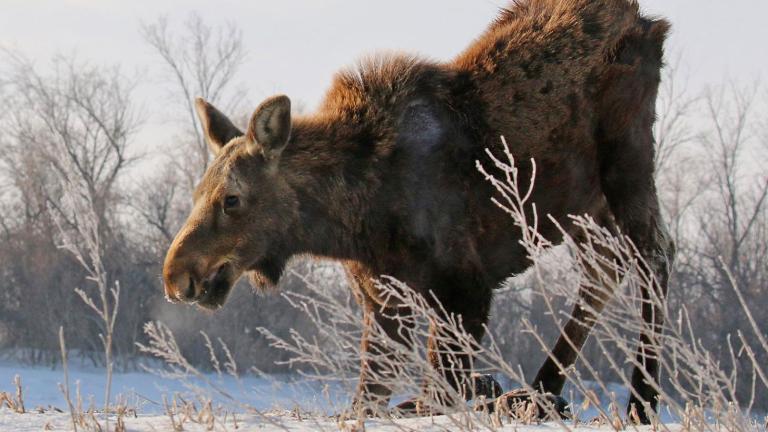
Kneeling Moose
Moose are tall, gangly creatures that normally eat from the trees. When a food source is on the ground things get challenging. Learn more in this post.
Read Full Article: Kneeling Moose
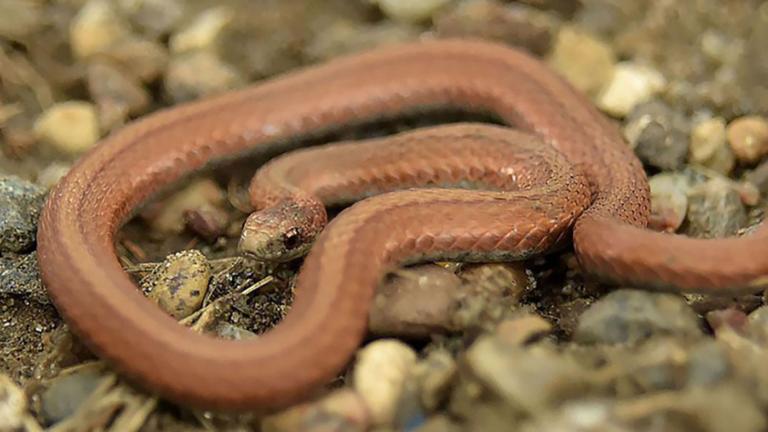
Red-Bellied Snakes
Red-bellied snakes can be found in the eastern half of North Dakota and are the state's smallest snake reaching lengths of only 8-10 inches.
Read Full Article: Learn more about red-bellied snakes
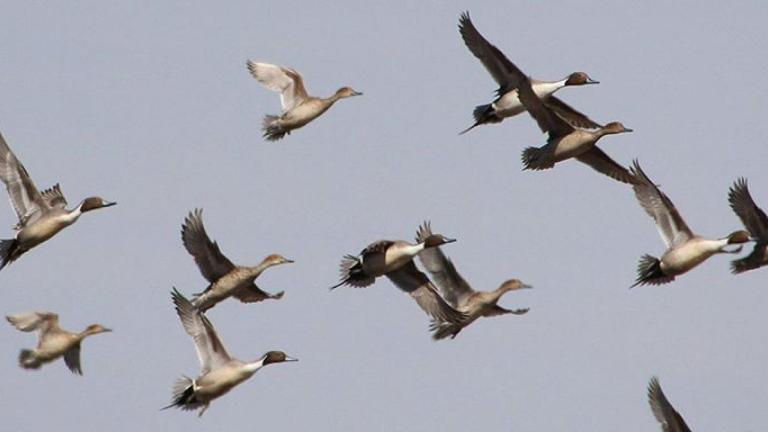
Birds of a Feather
Did you know a hummingbird has about 1,000 feathers on its body, whereas a Northern pintail has nearly 15,000? Feathers vary in structure and function. Check out this cool interactive learning tool, All About Feathers.
Read Full Article: Birds of a Feather
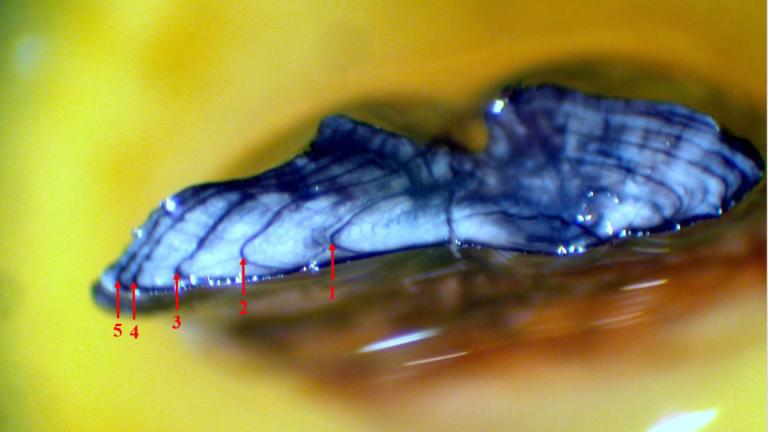
Aging Fish
Have you ever wondered how a bony fish can be aged? Biologists count the growth sections of their otoliths. Learn more in this post.
Read Full Article: Aging Fish
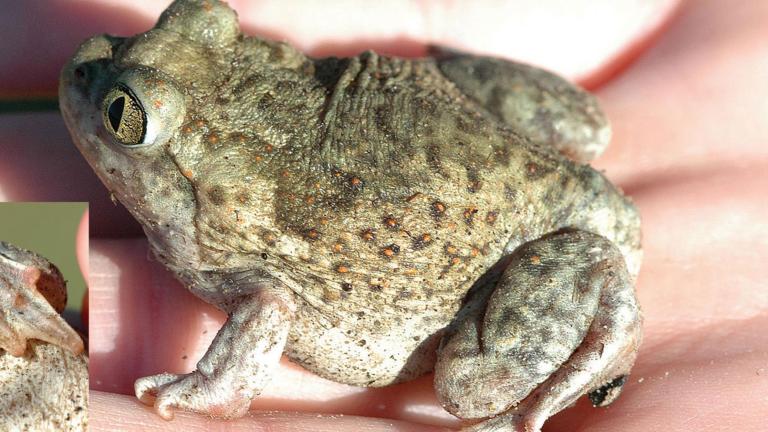
Plains Spadefoot
The plains spadefoot (Spea bombifrons) is the most easily recognized toad in North Dakota. Its skin is smooth like that of a frog, and it has a distinct vertical pupil like that of a cat. Its color varies from a light cream, to gray or brown, and may have small orange spots.
Read Full Article: More about plains spadefoot

Whooping Crane Migration
The whooping cranes that make their way through North Dakota each spring are part of a population of about 500 birds that are on their way from their wintering grounds at Aransas National Wildlife Refuge in Texas to their nesting grounds at Wood Buffalo National Park in Canada, a distance of about 2,500 miles.
Read Full Article: Learn More about whooping crane migration

Catfish Taste Receptors
Channel catfish are aptly nicknamed swimming tongues. Find out why in this Wildlife News post
Read Full Article: Catfish Taste Receptors
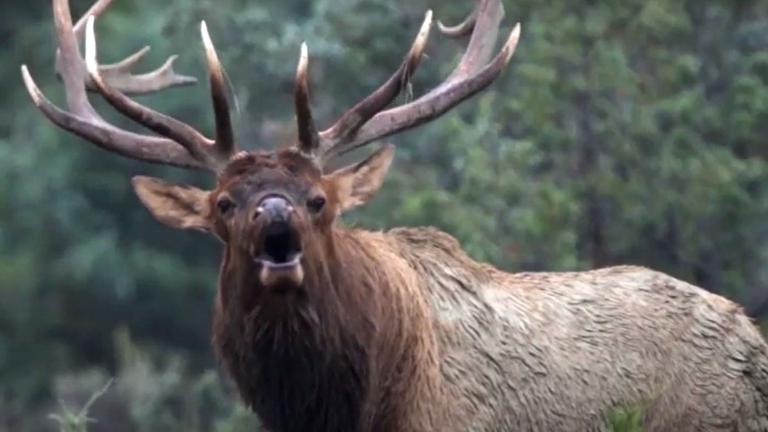
Elk Bugling
Department Upland Game Management Supervisor Jesse Kolar took this awesome video of a bull elk bugling in the badlands (Fall 2019).
Read Full Article: Watch Elk Bugling
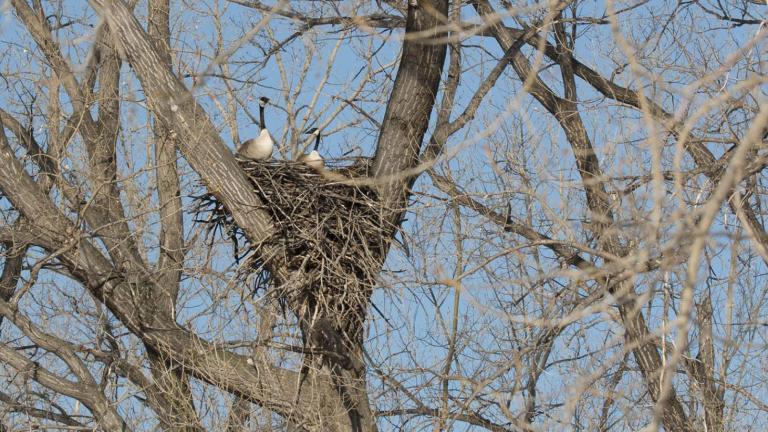
Canada Geese and Tree Nests
Did you know that Canada geese will sometimes appropriate old nests of tree nesting birds like eagles? How do the goslings get down from these nests? Find out here.
Read Full Article: Canada Geese and Tree Nests
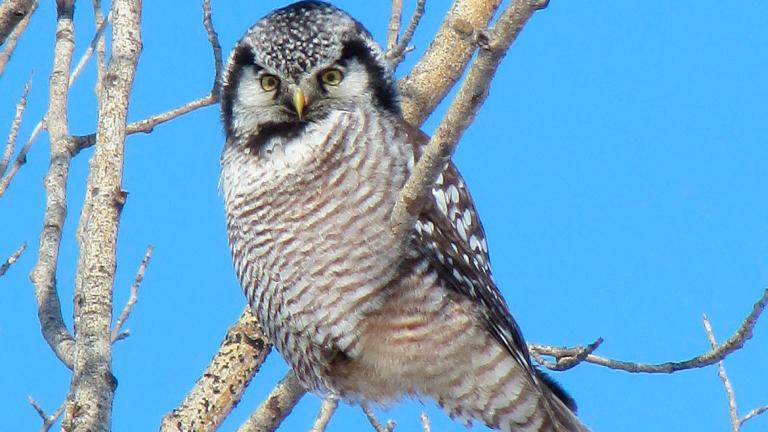
Northern Hawk Owl
The northern hawk owl is a unique looking creature that can occasionally be found in North Dakota in the winter.
Read Full Article: Watch Owl Video
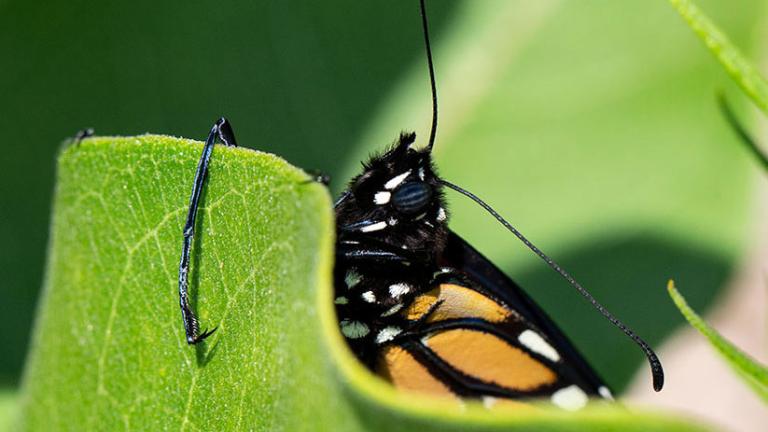
Mimicry in the Wild
Is it a monarch butterfly or a viceroy? Viceroy, along with many other species, use mimicry to aide survival. Find out more in this post.
Read Full Article: Mimicry in the Wild
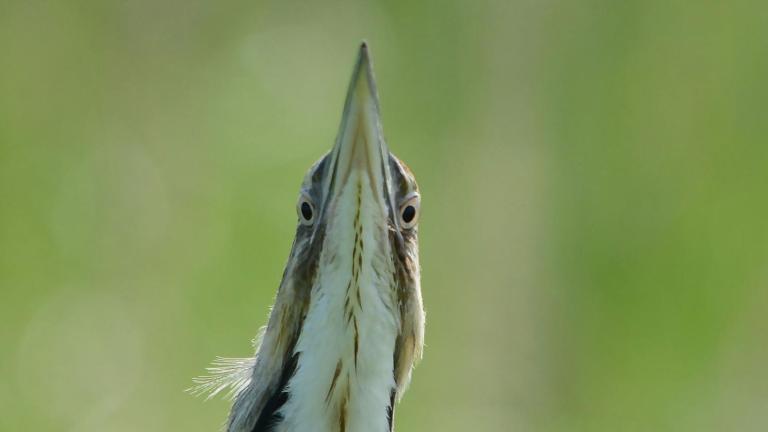
American Bittern Eyes
Did you know that the eyes on an American Bittern are set in their face so they can easily focus downward? Bittern eat a wide variety of prey like fish, insects, small reptiles and mammals which they use stalking behaviors to capture.
Read Full Article: Learn more about bittern
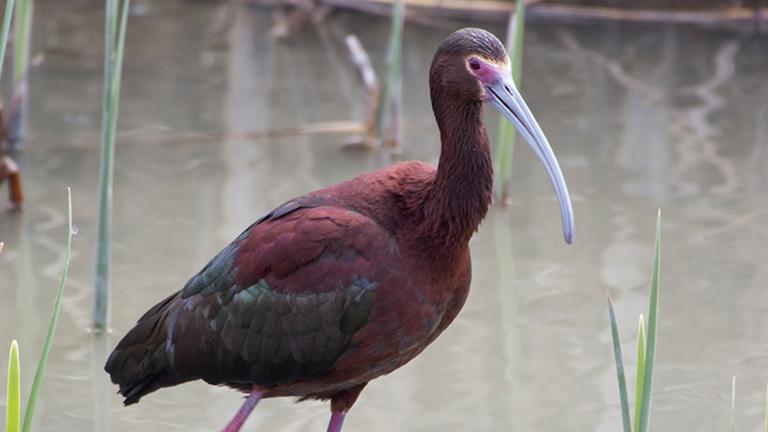
Wading Birds in North Dakota
Many species of wading birds migrate through North Dakota. Some even breed here. Learn more in this short video.
Read Full Article: Wading Birds in North Dakota
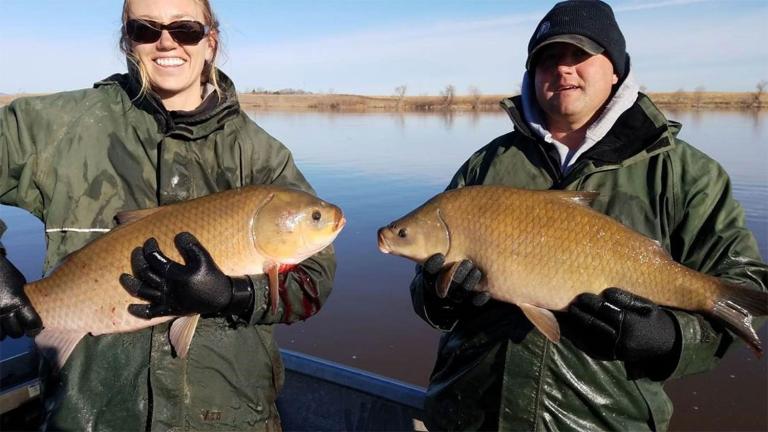
Bigmouth and Smallmouth Buffalo
Bigmouth buffalo and smallmouth buffalo are members of the sucker family and both native to the Missouri River System in North Dakota.
Read Full Article: Bigmouth and Smallmouth Buffalo
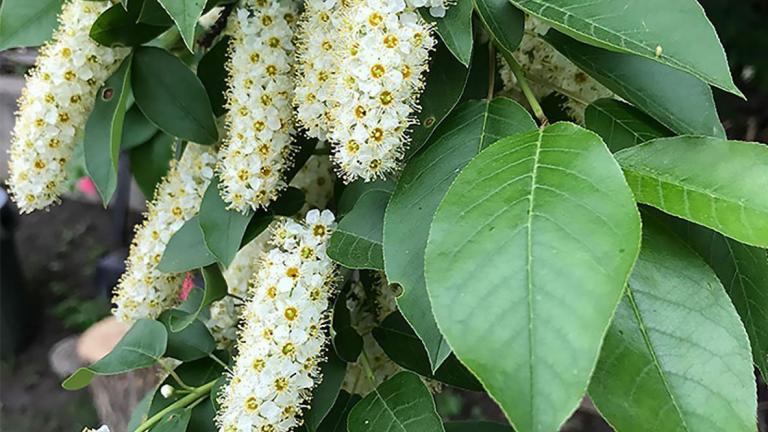
Chokecherry
Chokecherry (Prunus virginiana), a member of the rose family, is the state fruit of North Dakota. This small tree or shrub grows to a height of 20 feet.
Read Full Article: Learn more about chokecherries
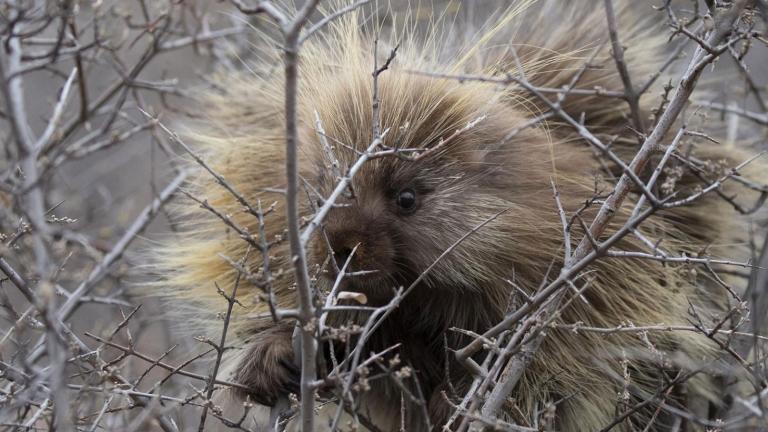
Porcupine Predators
While some larger predators will take on an occasional porcupine, only one in North Dakota is a truly effective predator of porcupines. Learn more.
Read Full Article: Porcupine Predators
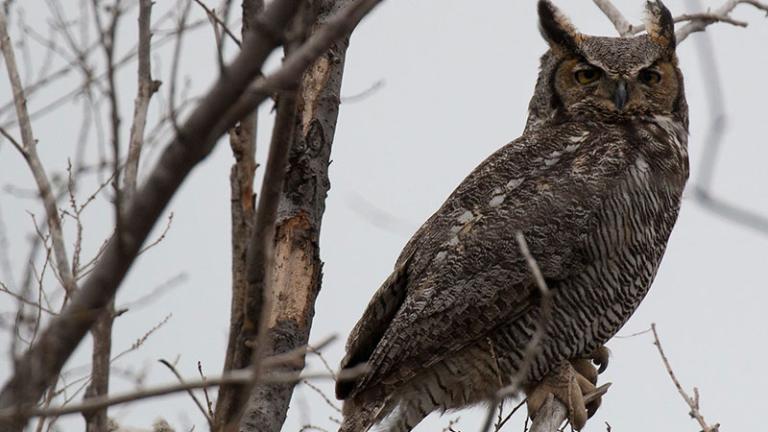
Owls in North Dakota
Learn about owls that migrate through and/or nest in North Dakota.
Read Full Article: Owls in North Dakota

How much wood can a woodchuck chuck
So, how much wood would a woodchuck chuck if a woodchuck could chuck wood? Well, a New York state wildlife expert, Richard Thomas, decided to answer that question some years back.
Read Full Article: Learn how much wood a woodchuck can chuck
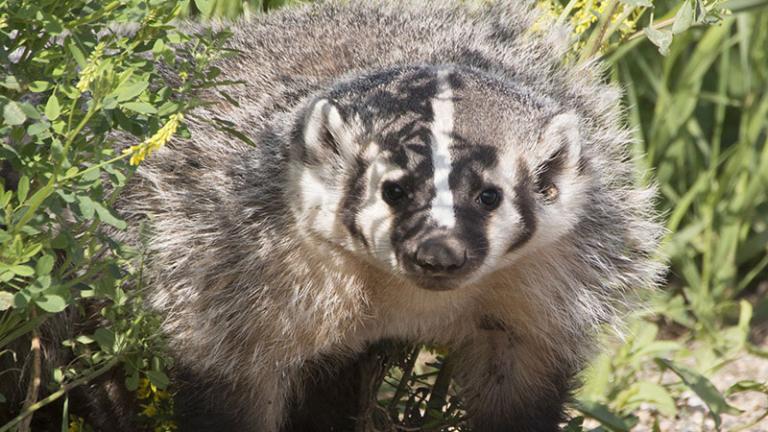
Badger
Badgers are found statewide in North Dakota. Find out more about this hard-digging furbearer in this segment of North Dakota Outdoors.
Read Full Article: Badger

Bighorn Sheep Clash
This clash of bighorn sheep was observed in the north unit of Theodore Roosevelt National Park in the fall of 2019. It was an epic battle, but in the end, no clear winner emerged...
Read Full Article: View Bighorn Sheep Clash

